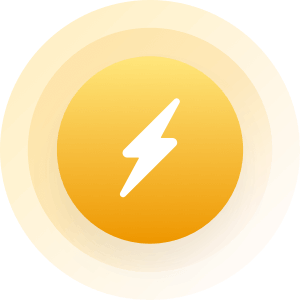| Topic: Look up at the sky tomorrow | |
|---|---|
|
In the pre-dawn hours of April 22 (1:00 - 3:00 am), be sure to look up. If you do, you'll likely be treated to a spectacular celestial show in the form of the Lyrids meteor shower.
Why bother to wake up at an ungodly hour to gaze at the sky? Several reasons. First, the Lyrids shower was, according to Meteor Showers Online, first observed at least 2,600 years ago, making it the oldest of any meteor shower. Secondly, viewers have a small chance "to get a glimpse of some dazzling fireball meteors from a completely different meteor swarm." Here's a brief breakdown on the shower's history, tips on where to watch, and how in the heck the meteors earned their name... How to see them It's slightly more complicated that just craning your neck skyward, but not by much. For maximum viewing, you'll want to find a dark place, away from city lights, and with an open horizon. Lie back and give your eyes several minutes to adjust to the darkness. Then, wait for the show. How to know if what you just saw was part of the shower or just some jerk with a laser pointer? SPACE.com explains that identifying a Lyrid meteor can be done by following its trail. A Lyrids meteor should have a trail that "points back to near the dazzling blue-white star Vega." You can check out a helpful sky chart here. Old, but reliable In China, there are ancient records from 687 B.C. and 15 B.C. of meteors that are "believed to be Lyrids." SPACE.com explains that the Lyrids caused a small panic in Richmond, Virginia, back in 1803. "Numerous townspeople... were roused from their beds by a fire alarm and were able to observe a very rich display between 1 and 3 o'clock." This time, we know they're coming. How'd they get their name? National Geographic has a nice write up on the meteors and their history. Vega's constellation, where the meteors appear to emanate from, is known as "Lyra." Hence, the "shooting stars" became known as "Lyrids." Simple enough, right? What can you expect to see? Whenever the Lyrids come around, they put on a slightly different show. As Anthony Cook, an astronomer for the Griffith Observatory in Los Angeles, told National Geographic, "The only way to know what the Lyrids have in store for you, is to go outside and observe them." As for the fireballs, Space.com calls their appearance a "wildcard," but it's definitely in the realm of possibility. |
|
|
|
|
|
awesome...a meteor shower on earth day, how kewl is that!!
|
|
|
|
|
|
yay!
:D |
|
|
|
|
|
WOW! I'll set my alarm to make sure I'm awake...I live in the city, so I don't know if I'll be able to see it, but my block is pretty much pitch black at night, because everyone here turn their lights off. Thanks Wolf19!!!
|
|
|
|
|
|
For maximum viewing, you'll want to find a dark place, away from city lights, and with an open horizon. Sounds awesome, but rules me out! |
|
|
|
|
|
Yep ... We'll see ... We are havin' some Biblical~like rain!!!
|
|
|
|
|
|
Or I could just take LSD and stare at my lava lamp.
That would be a super awesome light show. |
|
|
|
|
|
Edited by
red_lace
on
Thu 04/22/10 09:23 AM
|
|
|
I think my shower isn't working. I didn't see anything.

|
|
|
|
|
|
Edited by
centered
on
Thu 04/22/10 10:14 AM
|
|
|
In the pre-dawn hours of April 22 (1:00 - 3:00 am), be sure to look up. If you do, you'll likely be treated to a spectacular celestial show in the form of the Lyrids meteor shower [snipped] And actually, you can see the showers (given you have a clear sky) from a few days before the 22nd to a few days after. I recommend you check the Clear Sky Chart for your area to see which night is best for viewing. A bright moon can obscure the showers too. http://stardate.org/nightsky/moon Start here: http://cleardarksky.com/csk and choose your state (or province/etc), then your city. Note that there may be quite a few observatories in your area (such as 'private'), so I suggest you scroll down the list to find the observatory closest to you. You might even want to check 2-3 observatories close to you. The chart uses military (24hour) time format, so 22 (2 over a 2) would be 10pm and a lone '2' would be 2am (Friday in this sample). Thursday . . . . . . .Friday 1111111112222 12345678901230123... Moving across the chart, for the 'cloud cover' and 'transparency' rows, you'll want dark blue cell colors for the best sky for observation. Where to look? Towards the NE and look for the star Lyra - here's a map to get your oriented: http://www.spaceweather.com/meteors/lyrids/lyrids.html |
|
|
|
|
|
Wish I could but rain here till Monday, with severe weather tonight and tomarrow!! Damn!!
|
|
|
|
|
|
meh, fell asleep around 10pm so I dont even know

|
|
|
|
|












